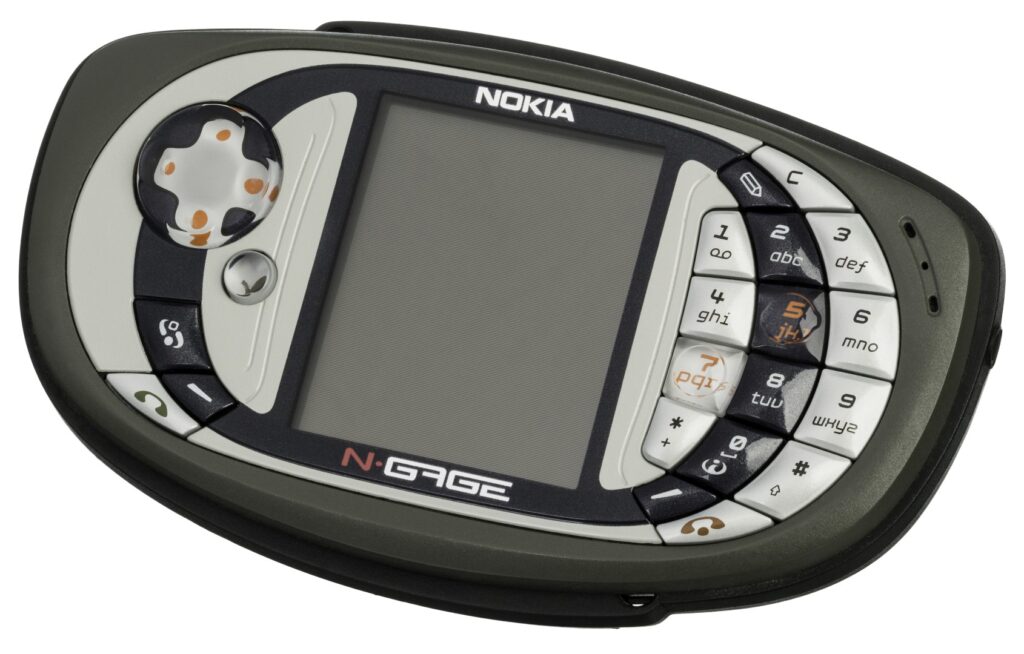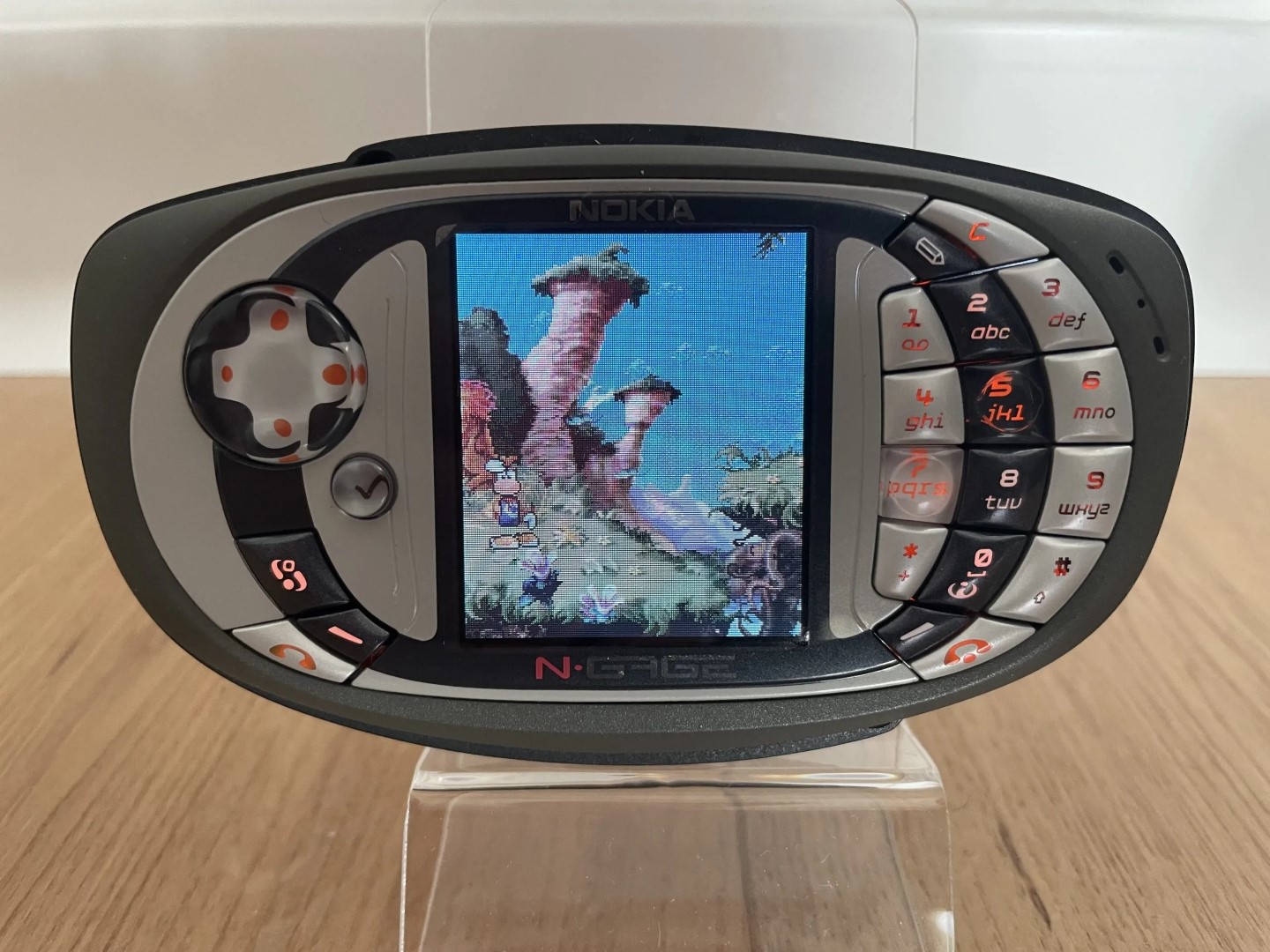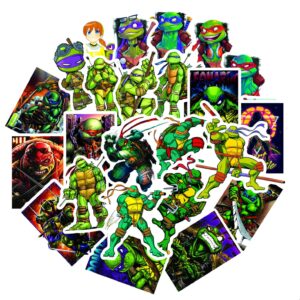Welcome to our comprehensive retrospective analysis of the Nokia N-Gage QD. We are excited to delve into the fascinating history and features of this iconic gaming console, which revolutionized the mobile gaming industry in 2004. Nokia N-Gage QD, a device marketed as a gaming console, was released in late 2004 to compete against gaming consoles released by Sony and Nintendo. The device was not only a phone but a portable game console in one, with its unique design specifically targeted to gamers.
The N-Gage QD was one of the first devices to allow an online gaming experience through GPRS, providing a cutting-edge entertainment experience for gamers worldwide. With its sleek design, mobile phone capabilities, and innovative gaming library, the Nokia N-Gage QD set the standard for future gaming consoles.
The marketing strategy for Nokia N-Gage QD was unconventional, as it was not launched through typical channels. Instead, Nokia released the device through game stores, such as GameStop, which targeted gamers directly. Despite some initial criticism, the device enjoyed moderate success upon launch and continued to dominate among handheld game consoles.

As we take a closer look at the Nokia N-Gage QD’s features, design, and marketing strategy, we will also explore the emergence of the mobile gaming industry and the impact that Nokia N-Gage QD had on the industry as a whole. Join us as we discover the magic of the Nokia N-Gage QD and its place in video gaming history.
Nokia N-Gage QD – Reception and Sales
When the Nokia N-Gage QD was first launched in 2004, it was met with mixed reception and strong criticism. Many gamers and critics had high expectations for Nokia’s entry into the gaming market, but the device’s design and performance left much to be desired.
One of the main criticisms of the device was its design; Nokia N-Gage QD had a peculiar shape, making it uncomfortable to hold and difficult to talk. One needed to remove the battery and the back panel to swap out games, making needed breaks for less enjoyable game play.
The device’s competition, such as the Gameboy Advance and PlayStation Portable, also hindered Nokia N-Gage QD’s adoption. Gamers were already familiar with the Gameboy’s and PlayStation’s superior gaming experiences, and Nokia struggled to convince consumers to switch to the N-Gage QD.
Despite the criticism, Nokia managed to sell over two million Nokia N-Gage QD units by the time it discontinued the device’s production in 2005. Sales numbers did not compare well to competitors, but the N-Gage QD was up against stiff competition, and it was difficult to compete against already established gaming handhelds.
The reception and sales figures of Nokia N-Gage QD were a mixed bag. Nokia had failed to make a genuine impact in the handheld gaming market, but, in time, it has had its place in history as a unique entry, adding depth to the timeline of production.
Games and Game Library
The success of a gaming console hugely depends on the games available on its platform. The Nokia N-Gage QD was no exception. At the time of its launch, Nokia N-Gage QD had an impressive game library, including hit titles such as Ashen, Splinter Cell, and SSX Out of Bounds.
These games offered a stunning gaming experience on a handheld device, making Nokia N-Gage QD a popular choice among gamers. However, Nokia N-Gage QD’s impact goes beyond providing gamers with great games. It went ahead and influenced the mobile gaming industry, paving the way for future mobile devices.

All three games mentioned above also had their versions for console platforms, such as PlayStation 2, Xbox, and GameCube. But Nokia N-Gage QD’s ability to host games of such quality on a mobile platform was a significant leap forward in mobile gaming.
Eventually, games became more accessible to people because of the evolution of mobile devices. Today, mobile game developers have access to 3D graphics, complex game physics, AI-powered non-playable characters, and more.
The Nokia N-Gage QD created the foundation for mobile gaming’s rapid growth, allowing people to play games anywhere, at any time, using their mobile devices. In the next section, we’ll take a deeper dive into Nokia N-Gage QD’s specs and features.
Specifications and Tech Overview
The Nokia N-Gage QD was a unique device for gaming enthusiasts, with its hardware and software built specifically for gaming. Although the device had trouble reaching a broader audience, it boasted impressive technical specifications. Let’s examine some of the device’s tech specs and features in detail.
The Nokia N-Gage QD was launched in 2004 and featured a 2.1-inch 176×208 pixel TFT display with 65,536 colors. It ran on a 104 MHz ARM920T processor with 64 MB of RAM, which was a perfect fit for games at the time. The device also included 3.4 MB of internal storage, which could be expanded up to 2 GB via MMC cards.
Compared to modern smartphones, Nokia N-Gage QD’s technical specifications seem relatively underwhelming. In terms of the processor, RAM, and storage, it lacks the necessary power to compete with contemporary devices. However, it is essential to remember that this device was built with the sole purpose of gaming.
Additionally, Nokia N-Gage QD weighed 143g and had dimensions of 118x68x22mm, which were considered rather bulky and unconvincing for the form factor at the time. Despite this, the device’s battery life was impressive, with it being able to support 5 hours of gameplay and 13 days of standby time.
Criticism and Negatives
When discussing the Nokia N-Gage QD, it is essential to address the negatives associated with the device. Despite its innovative nature, the Nokia N-Gage QD was not without its criticisms.
One of the most significant criticisms of the device arose from the design and the size of the phone. Critics argued that the device was too large for comfortable use as a gaming device. The location of the buttons, which were situated around the screen’s edges, also made the device awkward and challenging to use.
The quality of the gaming experience also received some criticism, and the device was not considered to be a serious gaming machine. Although the Nokia N-Gage QD offered a unique and groundbreaking hybrid platform as a mobile phone and game console, it was notably outclassed by rivals such as Nintendo’s Gameboy Advance and Sony’s PlayStation Portable.
These negatives had a significant impact on the Nokia N-Gage QD’s success. While the device offered a new and exciting gaming experience, it failed to capture the market and struggled to sell.
Despite the criticisms, it is essential to understand the context of the time. The Nokia N-Gage QD was released over 16 years ago, and technology has come a long way since. It was one of the first devices that attempted to combine gaming with traditional mobile phone functionality, resulting in challenges and limitations in design and hardware quality.
Retrospective Review
Nokia N-Gage QD was a groundbreaking device that paved the way for mobile gaming as we know it today. It was launched in 2004, and despite its initial reception, the device has earned its place in gaming history.
Overview of Nokia N-Gage QD’s place in history
Nokia N-Gage QD was not just a mobile gaming device; it was one of the first devices to combine telephony with a gaming platform. The device offered a lot of great features, including a large screen, a bevy of gaming titles, and a physical design focused on gaming, which Nokia hoped would attract gamers. However, consumers were hesitant about the device, and many of them wanted a separate gaming and calling-only device.
Pros and cons of Nokia N-Gage QD
Nokia N-Gage QD remains a device that had a lot of potential. It had a sleek design, with well-designed controls that made gaming enjoyable. The device also featured Bluetooth technology, an FM radio, and an MP3 player, which made it a perfect all-in-one device. However, the phone’s games were not on par with its competitors, which was a significant drawback. Additionally, the N-Gage QD’s limited battery life and challenging input system were also cons.
Discussion of Nokia’s influence on the gaming industry, particularly mobile gaming
Nokia N-Gage QD, despite having some setbacks, opened the door for mobile gaming. Ideally, without Nokia N-Gage QD, mobile gaming wouldn’t have been prominent, and we wouldn’t have games like Angry Birds and Candy Crush on our smartphones. Nokia’s decision to combine telephony with gaming was revolutionary, and it set the stage for future brands like Apple and Google to introduce mobile gaming features to their smartphones.
In retrospect, Nokia N-Gage QD may not have been as successful as the brand hoped, but it changed the gaming industry forever. Nokia’s innovation and implementation of mobile gaming paved the way for the gaming industry’s billion-dollar industry today.
Conclusion
After a thorough examination of the Nokia N-Gage QD, it’s evident that this device served as a trailblazer in the mobile gaming industry. Although it faced various challenges, such as criticism of its design and sales decline, it remains a valuable piece of video game history.
The Nokia N-Gage QD introduced a unique blend of communication and video gaming in the early 2000s, influencing how mobile gaming operates today. The device’s impressive features created an immersive gaming experience that had not been seen before in mobile gaming.
In retrospect, it’s easy to recognize the device’s pros and cons. The Nokia N-Gage QD achieved a lot in terms of creating an enjoyable and accessible mobile gaming experience, but it also highlighted the limitations of gaming consoles at the time.
For those interested in buying a Nokia N-Gage QD, it’s worth considering the device’s place in history, the available gaming library, and the device’s overall appeal and design.
FAQs
1. What were the main criticisms of the Nokia N-Gage QD upon its initial launch in 2004?
Many criticized the device’s awkward design, which required users to hold the device sideways to make calls. The game cartridges were also difficult to insert and remove. In addition, the initial price point was high, and the game library was limited.
2. How did the Nokia N-Gage QD compare to its competitors, such as the Gameboy Advance and PlayStation Portable?
The N-Gage QD had a smaller game library and lower sales figures compared to the Gameboy Advance and PlayStation Portable. The design of the N-Gage QD also made it less intuitive for gaming on-the-go.
3. What were some popular games available on the Nokia N-Gage QD?
Popular titles on the N-Gage QD included Ashen, Splinter Cell, and SSX Out of Bounds.
4. How did the Nokia N-Gage QD influence mobile gaming today?
The N-Gage QD was one of the first devices to merge mobile phones and portable gaming, paving the way for future smartphones with gaming capabilities. Its impact on the mobile gaming industry helped to popularize the idea of mobile gaming and make it a mainstream form of entertainment.
5. What were some of the negatives associated with the Nokia N-Gage QD?
Some of the main negatives associated with the N-Gage QD were its awkward design, limited game library, and the need to remove the battery to change game cartridges. It also faced strong competition from Nintendo and Sony, which ultimately led to its decline in popularity.













